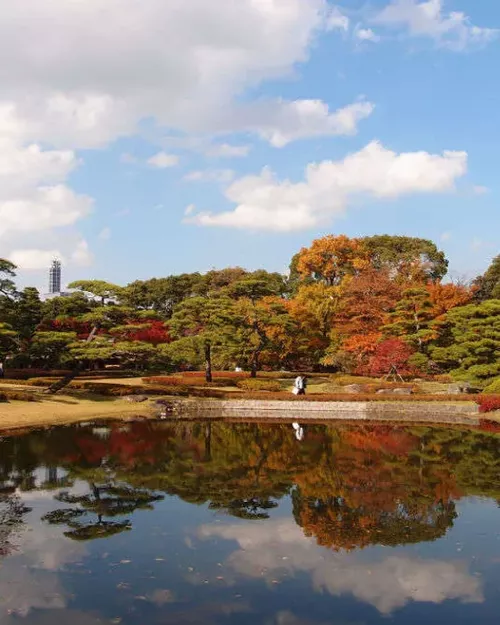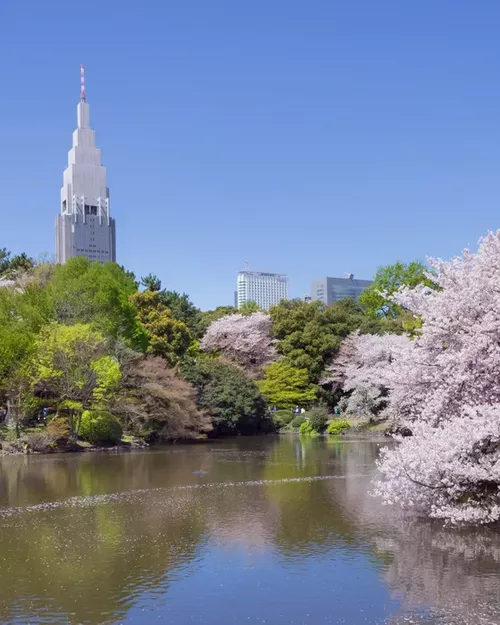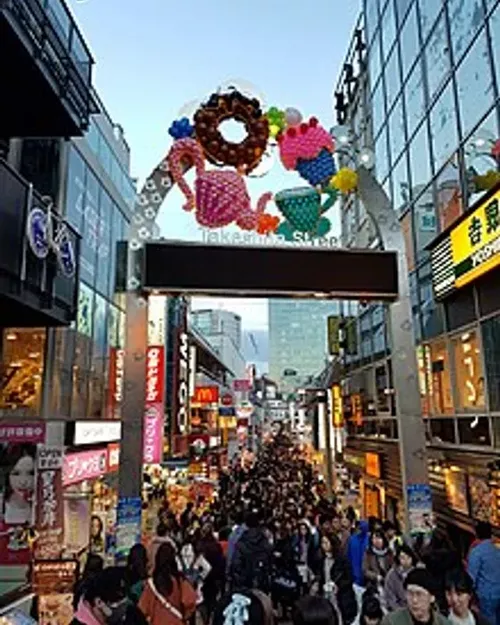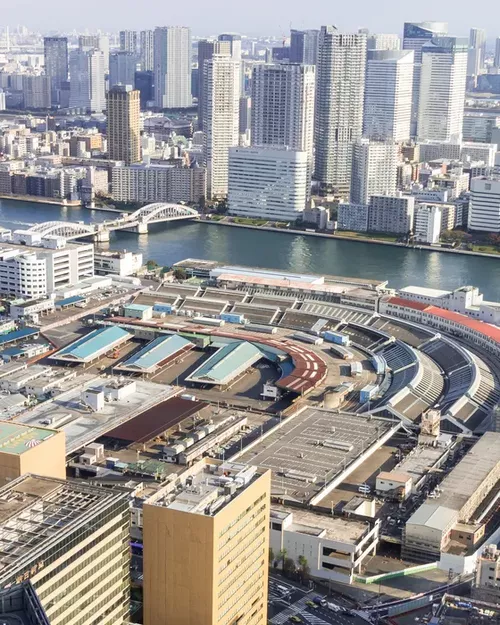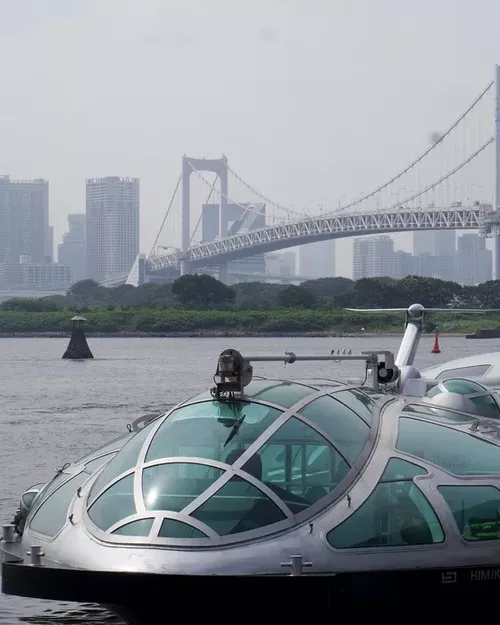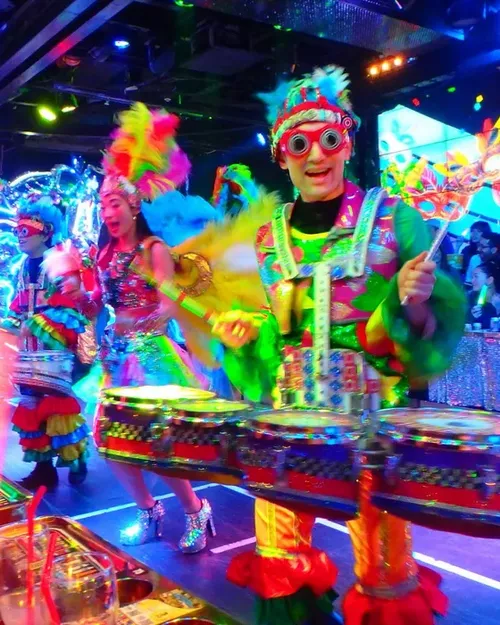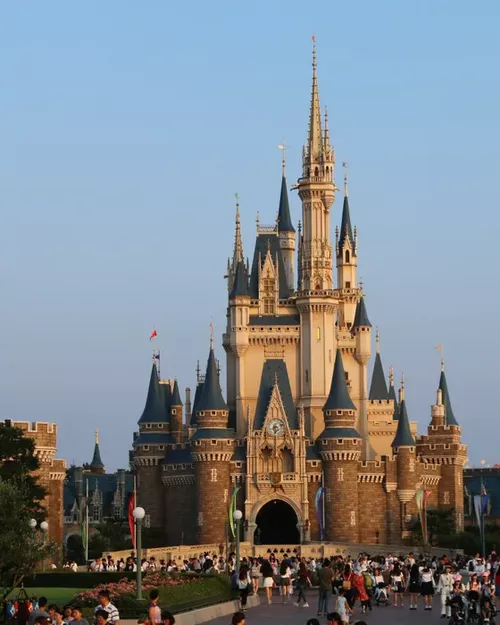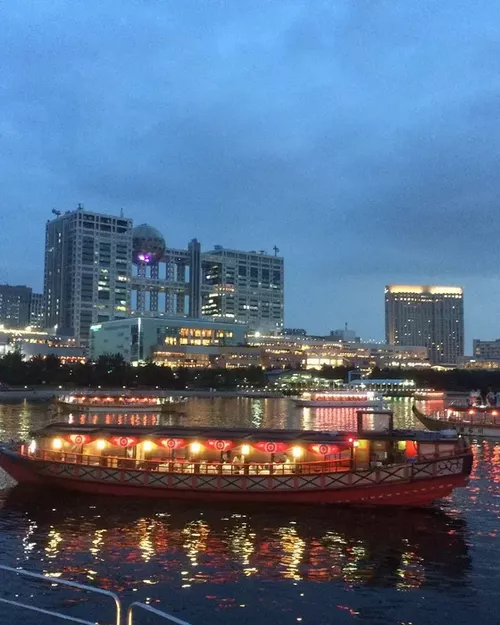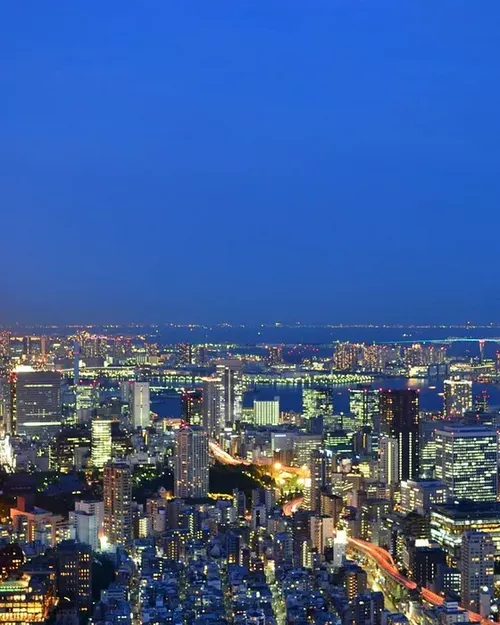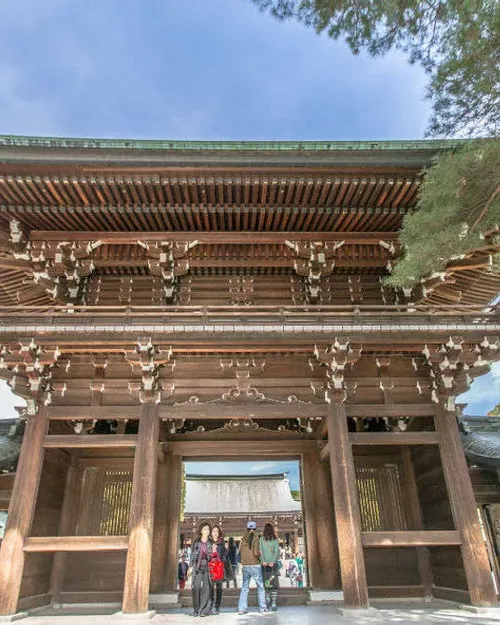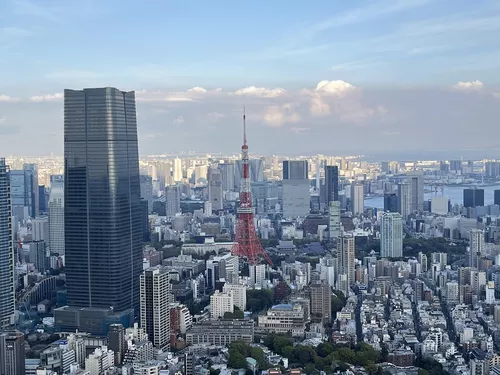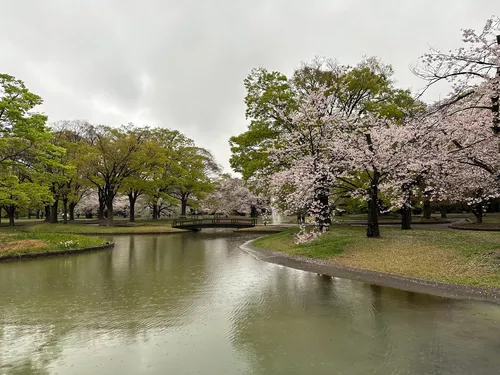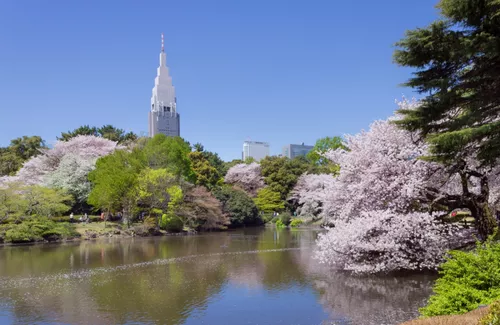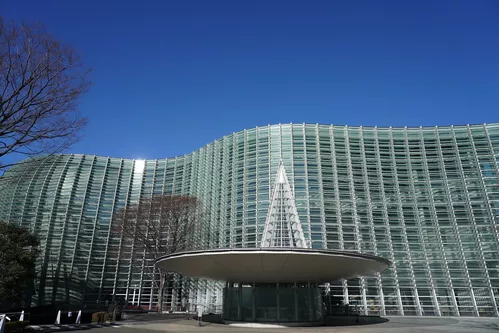Tokyo is popular for
Tokyo in next 3 month
Weather in Tokyo
December in Tokyo is cold with occasional snowfall, clear skies, and good air quality.
Usual trip duration
A 4-5 day trip to Tokyo allows you to explore the city's iconic landmarks such as the Tokyo Tower, Senso-ji Temple, and the Imperial Palace. You can also experience the vibrant nightlife in areas like Shinjuku and Shibuya, and indulge in the diverse culinary scene.
Moderately expensive
Ideas To Plan Your Trip
Places To Visit
Places To Eat
Frequently Asked Questions about Tokyo
The best times to visit Tokyo are during the spring (March to May) and autumn (September to November). In spring, you can witness the beautiful cherry blossoms (sakura) in full bloom, creating a magical atmosphere throughout the city. The weather is mild and pleasant, perfect for outdoor activities and exploring the numerous parks and gardens. However, be prepared for crowds, especially during peak cherry blossom season. Autumn offers comfortable temperatures and stunning foliage, with the leaves turning vibrant shades of red, orange, and yellow. It's an excellent time for hiking, visiting temples and shrines, and enjoying seasonal festivals. The summer months (June to August) can be hot and humid, with occasional typhoons, while winter (December to February) is generally cold and dry, with the possibility of snow. Despite the weather, Tokyo is a year-round destination with unique attractions and events happening in every season.
Tokyo is easily accessible by air, train, and even by sea. The most common way to reach Tokyo is by air. Here's a breakdown of the transportation options:
| Mode of Transport | Details |
|---|---|
| By Air | Tokyo has two major international airports: Narita International Airport (NRT) and Haneda Airport (HND). Haneda is closer to the city center and primarily handles domestic flights and some international routes. Narita is located further out and serves a larger number of international destinations. Both airports are well-connected to the city center by train and bus. The Narita Express and Limousine Bus are popular choices from Narita, while the Keikyu Line and Tokyo Monorail offer convenient access from Haneda. |
| By Train | Tokyo is the central hub of Japan's extensive Shinkansen (bullet train) network. You can reach Tokyo from most major cities in Japan, including Kyoto, Osaka, Hiroshima, and Fukuoka, via Shinkansen. The Shinkansen is a fast, efficient, and comfortable way to travel within Japan. Tokyo Station is the primary Shinkansen terminal. |
Tokyo offers a captivating blend of modern and traditional attractions, providing visitors with a diverse and enriching experience. Here's a curated list of must-visit places in Tokyo:
| Attraction | Description |
|---|---|
| Senso-ji Temple | Tokyo's oldest temple, located in Asakusa, featuring the iconic Kaminarimon Gate and Nakamise-dori market street. |
| Tokyo Skytree | One of the tallest structures in the world, offering panoramic views of Tokyo from its observation decks. |
| Shibuya Crossing | The world's busiest intersection, a symbol of modern Tokyo, offering a unique and energetic experience. |
| Meiji Jingu Shrine | A peaceful oasis dedicated to Emperor Meiji and Empress Shoken, surrounded by a lush forest. |
| Imperial Palace East Garden | The former site of Edo Castle, now a public garden offering a glimpse into Japan's imperial history. |
| Ghibli Museum | A whimsical museum dedicated to the works of Studio Ghibli, the renowned animation studio. (Reservations required in advance) |
| Ueno Park | A large public park housing several museums, a zoo, and beautiful gardens. |
| Akihabara | Known as Electric Town, Akihabara is a haven for electronics, anime, manga, and gaming enthusiasts. |
Tokyo offers a vast array of activities to suit every interest, from cultural experiences to thrilling adventures. Here are some popular activities to enjoy in Tokyo:
- Explore the vibrant districts of Shibuya, Shinjuku, and Ginza.
- Visit traditional gardens like the Shinjuku Gyoen National Garden and the Koishikawa Korakuen Garden.
- Attend a sumo wrestling match (seasonal).
- Experience a traditional tea ceremony.
- Sing karaoke in a private room.
- Visit a themed cafe, such as a cat cafe or a robot restaurant.
- Take a day trip to Hakone, a mountain resort town known for its hot springs and views of Mount Fuji.
- Enjoy the nightlife in Shinjuku's Golden Gai or Roppongi.
- Wander through the Tsukiji Outer Market and sample fresh seafood.
- Visit one of Tokyo's many museums, such as the Tokyo National Museum or the Mori Art Museum.
Tokyo serves as an excellent base for exploring the surrounding regions. Here are some popular day trips and nearby destinations from Tokyo:
| Destination | Travel Time (Approx.) | Highlights |
|---|---|---|
| Hakone | 1.5-2 hours by train | Mountain resort town, hot springs, views of Mount Fuji, art museums. |
| Kamakura | 1 hour by train | Historic coastal town, Great Buddha statue at Kotoku-in Temple, numerous temples and shrines. |
| Yokohama | 30 minutes by train | Port city, Chinatown, Minato Mirai 21 waterfront area, Ramen Museum. |
| Nikko | 2 hours by train | UNESCO World Heritage Site, Toshogu Shrine, scenic landscapes, Lake Chuzenji. |
| Mount Fuji | 2-3 hours by bus or train | Iconic volcano, hiking (seasonal), Fuji Five Lakes, scenic views. |
Tokyo is a shopper's paradise, offering a wide variety of retail experiences, from high-end department stores to quirky vintage shops. Here are some of the best shopping spots in Tokyo:
| Area | What to Buy |
|---|---|
| Ginza | Luxury brands, department stores, cosmetics, electronics. |
| Shibuya | Trendy fashion, youth culture, street style, music, accessories. |
| Shinjuku | Department stores, electronics, cameras, fashion, souvenirs. |
| Harajuku | Unique fashion, cosplay items, vintage clothing, street food. |
| Akihabara | Electronics, anime, manga, video games, gadgets. |
| Nakamise-dori (Asakusa) | Traditional crafts, souvenirs, snacks, kimono accessories. |
Tokyo is a culinary paradise, boasting a vast array of dining options, from Michelin-starred restaurants to humble street food stalls. Here are some recommended restaurants and food experiences in Tokyo:
| Cuisine/Experience | Recommendation |
|---|---|
| Sushi | Tsukiji Outer Market (for fresh and affordable sushi), Sukiyabashi Jiro (Michelin-starred, requires reservation). |
| Ramen | Ichiran (popular chain for tonkotsu ramen), Afuri (yuzu ramen). |
| Tempura | Kondo (Michelin-starred), Tsunahachi (traditional tempura restaurant). |
| Yakitori | Omoide Yokocho (Memory Lane) in Shinjuku (for a nostalgic yakitori experience). |
| Izakaya (Japanese Pub) | Explore local izakayas in areas like Shibuya and Shinjuku for a casual dining experience. |
| Kaiseki (Traditional multi-course meal) | Many high-end restaurants offer Kaiseki meals, providing a refined dining experience. |
| Street Food | Explore areas like Harajuku and Asakusa for street food like takoyaki, crepes, and taiyaki. |
Tokyo's public transportation system is renowned for its efficiency, punctuality, and extensive coverage, making it easy to navigate the city. The system primarily consists of trains and subways, with buses playing a smaller role. The trains and subways are operated by multiple companies, including JR (Japan Railways) and various private subway lines. The network is vast and can seem complicated at first, but with a little planning, it's easy to use.
Key features of Tokyo's public transportation:
- High Frequency: Trains and subways run frequently, especially during peak hours, with intervals as short as a few minutes.
- Punctuality: Delays are rare, and trains typically arrive and depart on schedule.
- Extensive Network: The network covers most areas of the city and its surrounding suburbs.
- Cleanliness: Trains and stations are generally clean and well-maintained.
- Signage: English signage is widely available, making it easier for tourists to navigate.
- IC Cards: Suica and Pasmo are rechargeable IC cards that can be used on most trains, subways, and buses in Tokyo. They offer a convenient and cashless way to pay for fares.
Using a Japan Rail Pass can be cost effective if you are traveling extensively throughout Japan, but within Tokyo, individual tickets or an IC card are often more economical.
Tokyo can be an expensive city, but with some planning, it's possible to experience its many attractions on a budget. Here are some tips for visiting Tokyo without breaking the bank:
- Accommodation: Consider staying in budget-friendly accommodations such as hostels, guesthouses, or capsule hotels.
- Transportation: Utilize Tokyo's efficient public transportation system. Purchase a Suica or Pasmo card for easy and affordable travel.
- Food: Explore local restaurants and food stalls instead of high-end establishments. Convenience stores (konbini) offer affordable and tasty meals.
- Activities: Take advantage of free attractions such as parks, gardens, and temples. Many museums offer free admission days or discounted rates.
- Shopping: Shop for souvenirs and local products at budget-friendly markets and discount stores.
- Free Walking Tours: Join free walking tours to explore different neighborhoods and learn about Tokyo's history and culture.
Tokyo offers a wealth of unique cultural experiences that delve into Japan's rich traditions and modern innovations. Here are some suggestions:
- Tea Ceremony (Chado): Participate in a traditional tea ceremony to experience the art of preparing and serving matcha (green tea).
- Sumo Wrestling: Attend a sumo wrestling match (seasonal) to witness this iconic Japanese sport.
- Kabuki Theater: Watch a Kabuki performance, a classical Japanese dance-drama known for its elaborate costumes and stylized acting.
- Visit a Temple or Shrine: Explore the serene atmosphere of temples like Senso-ji or shrines like Meiji Jingu to learn about Japanese religious traditions.
- Attend a Festival (Matsuri): Experience the vibrant energy of a local festival, featuring traditional music, dances, and food stalls.
- Kimono Experience: Rent a kimono and stroll through traditional neighborhoods like Asakusa for a unique photo opportunity.
- Learn Calligraphy (Shodo): Take a calligraphy class to learn the art of Japanese brush writing.
Tipping is not customary in Japan, including in Tokyo. In fact, attempting to tip can sometimes be seen as rude or confusing. Staff in restaurants, hotels, taxis, and other service industries are generally well-compensated, and tipping is not expected. Instead of tipping, it's considered good practice to express your gratitude with a simple "arigato" (thank you). In some high-end establishments, a service charge may be added to the bill, but this is not a tip and is part of the establishment's pricing structure.
Attempting to leave a tip may cause confusion or even offense. If you are particularly pleased with the service, expressing your appreciation verbally is the best approach. Trying to force a tip may make the service provider uncomfortable. It's a cultural difference that's important to respect while visiting Tokyo.
Staying connected to the internet in Tokyo is generally easy, with several options available to tourists. Here are some common ways to access the internet:
- Pocket Wi-Fi Rental: Renting a pocket Wi-Fi device is a popular option for tourists. These small, portable routers provide a secure and reliable Wi-Fi connection for multiple devices. You can pick them up at the airport or have them delivered to your hotel.
- SIM Card: Purchasing a prepaid SIM card is another convenient option, especially if you have an unlocked smartphone. SIM cards with data plans are available at airports, electronics stores, and convenience stores.
- Free Wi-Fi Hotspots: Many cafes, restaurants, hotels, and public spaces in Tokyo offer free Wi-Fi. However, the speed and reliability of these hotspots can vary.
- Hotel Wi-Fi: Most hotels in Tokyo offer complimentary Wi-Fi to their guests.
Pocket Wi-Fi rentals are often the most convenient option for tourists who want to stay connected throughout their trip. They provide a secure and reliable connection, and you can share the connection with multiple devices.
Knowing a few basic Japanese phrases can greatly enhance your experience in Tokyo and show respect for the local culture. While many people in tourist areas speak some English, using Japanese phrases will be appreciated. Here are some essential phrases to learn:
- Hello: Konnichiwa (こんにちは)
- Thank you: Arigato (ありがとう)
- You're welcome: Doitashimashite (どういたしまして)
- Excuse me: Sumimasen (すみません)
- Good morning: Ohayo gozaimasu (おはようございます)
- Good evening: Konbanwa (こんばんは)
- Goodbye: Sayonara (さようなら)
- Yes: Hai (はい)
- No: Iie (いいえ)
- I don't understand: Wakarimasen (わかりません)
- Please: Kudasai (ください)
- How much is it?: Ikura desu ka? (いくらですか?)




